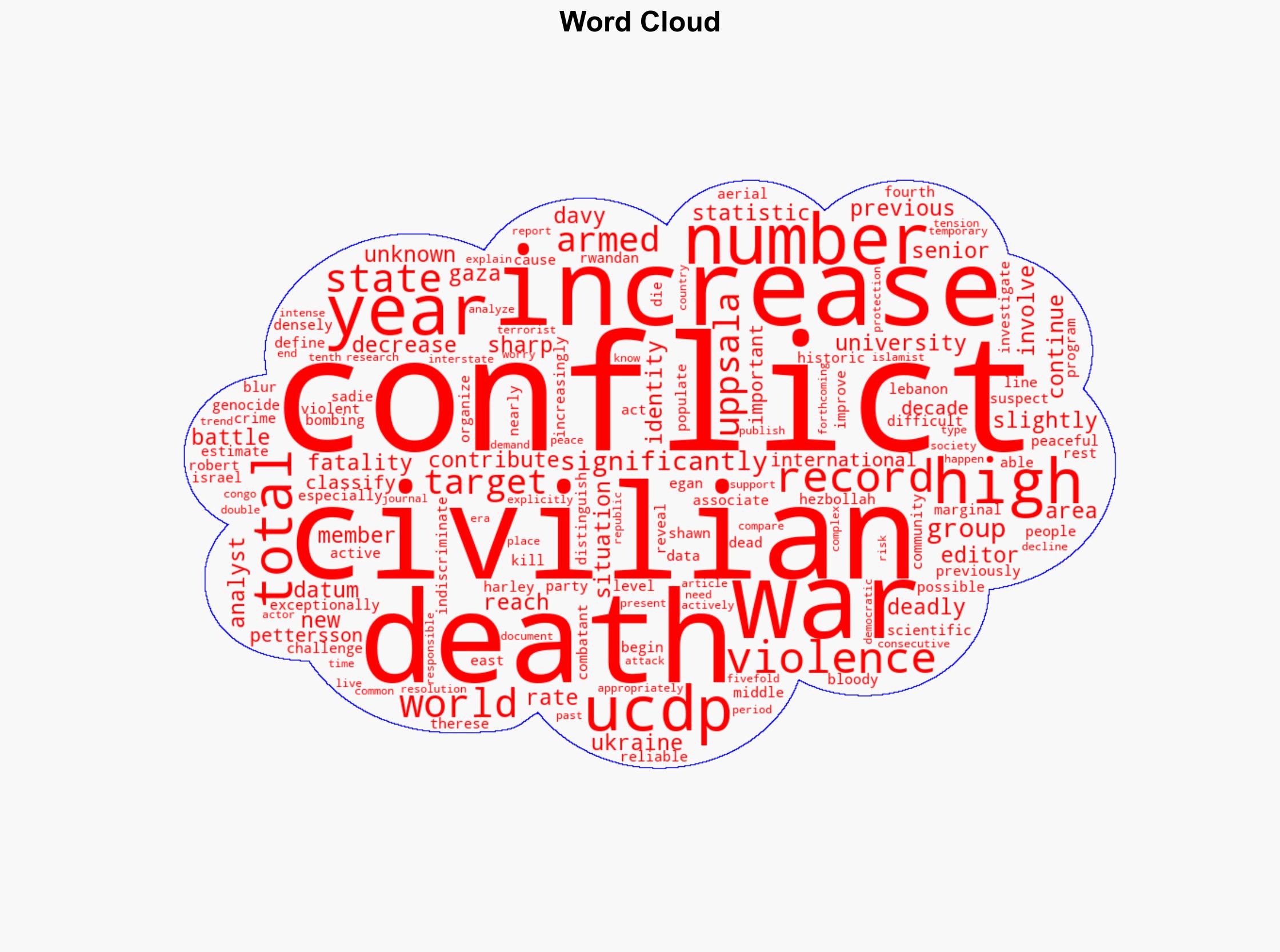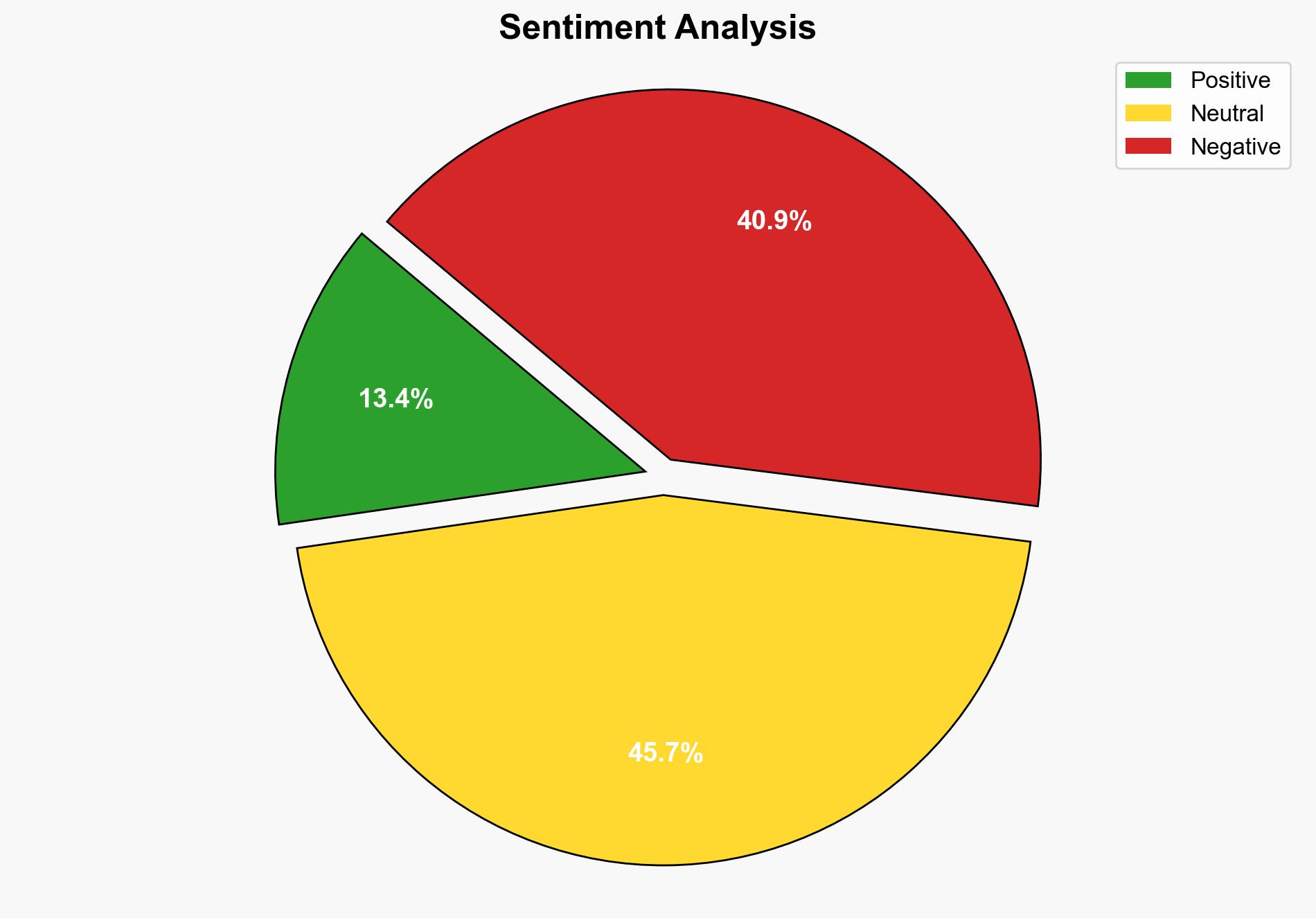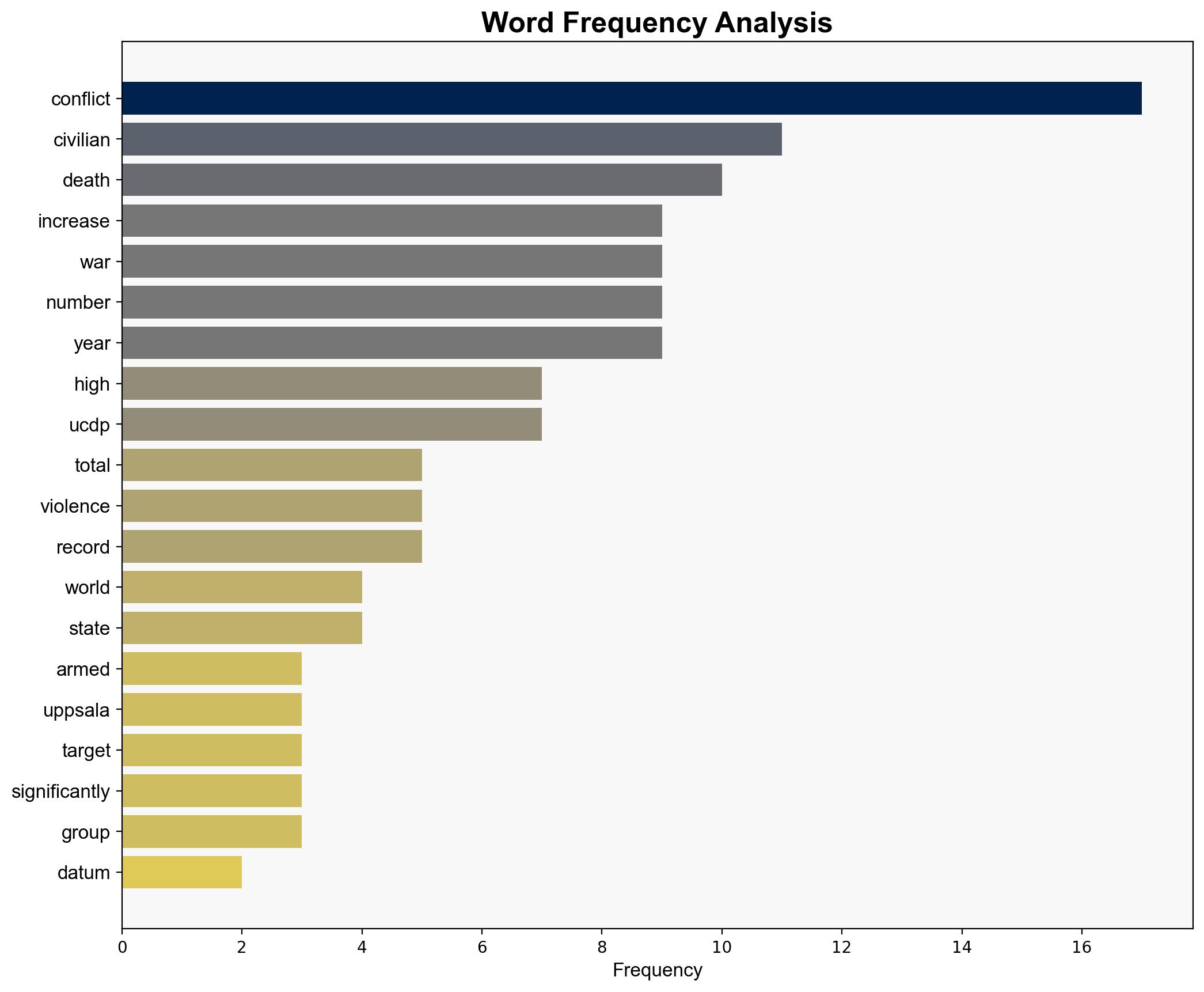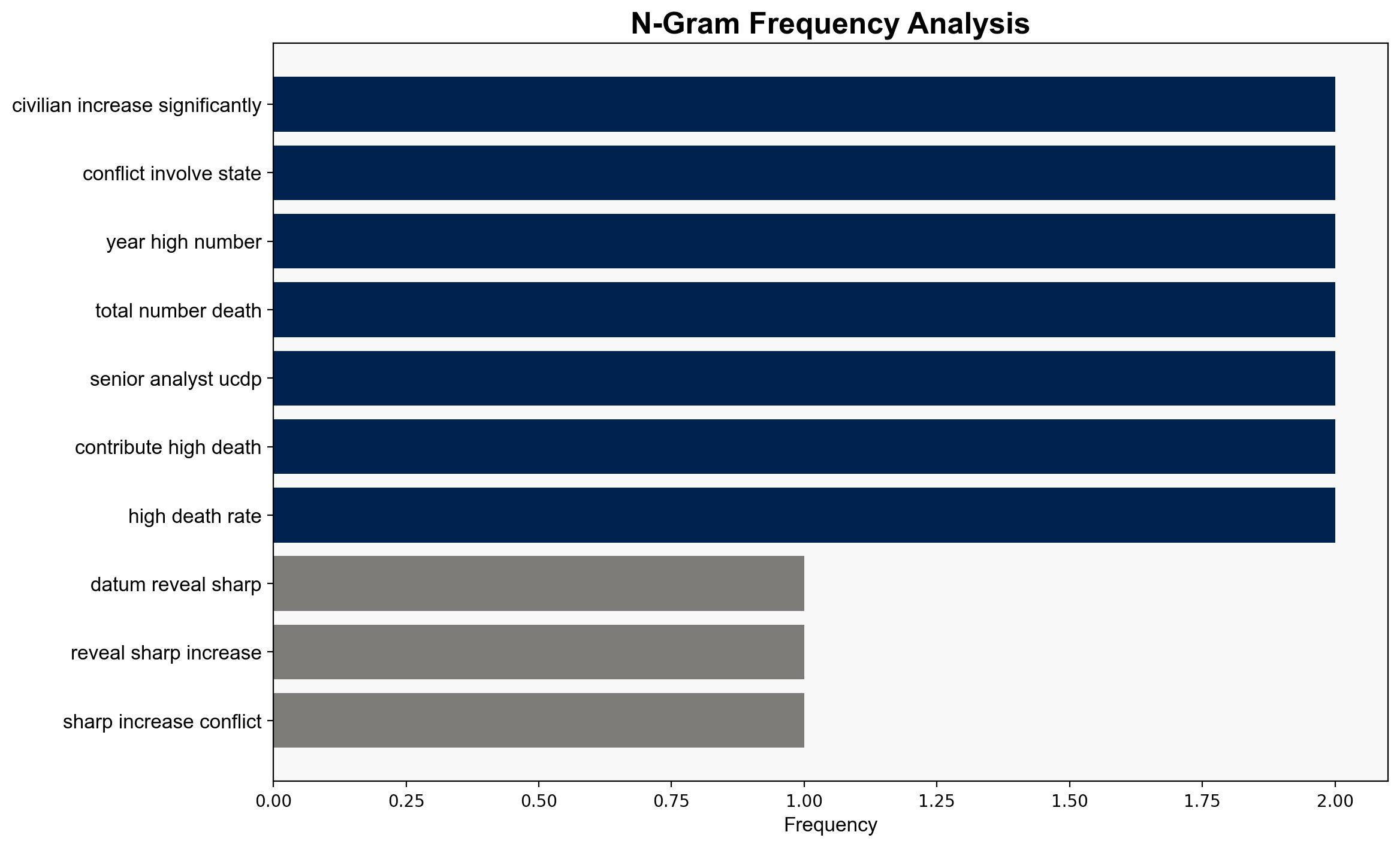Data reveal sharp increase in conflicts and wars – Phys.Org
Published on: 2025-06-11
Intelligence Report: Data reveal sharp increase in conflicts and wars – Phys.Org
1. BLUF (Bottom Line Up Front)
Recent data from the Uppsala Conflict Data Program indicates a historic rise in global armed conflicts, with a significant increase in violence targeting civilians. Despite a marginal decrease in total fatalities, the complexity and intensity of conflicts have escalated, particularly in regions like Ukraine and the Middle East. Immediate strategic focus is required to address the blurring lines between civilians and combatants, and to enhance international conflict resolution mechanisms.
2. Detailed Analysis
The following structured analytic techniques have been applied to ensure methodological consistency:
ACH 2.0
Analyzed the intentions of threat actors using hypothesis testing, revealing a strategic shift towards targeting civilian populations to maximize psychological impact and destabilize regions.
Indicators Development
Monitored digital radicalization and propaganda dissemination, identifying increased recruitment efforts by extremist groups, particularly in conflict zones.
Narrative Pattern Analysis
Examined ideological narratives, noting their adaptation to exploit socio-political grievances and incite violence, contributing to sustained conflict cycles.
3. Implications and Strategic Risks
The rise in conflicts poses significant risks across multiple domains. Politically, there is a heightened risk of state destabilization and increased interstate tensions. Economically, prolonged conflicts could disrupt global markets and supply chains. Militarily, the complexity of modern warfare challenges traditional defense strategies. Cyber threats are likely to escalate as actors exploit digital platforms for propaganda and recruitment.
4. Recommendations and Outlook
- Enhance intelligence-sharing frameworks to improve early warning systems and preemptively address emerging threats.
- Strengthen international diplomatic efforts to mediate conflicts and support peacebuilding initiatives.
- Scenario Projections:
- Best Case: Successful international mediation reduces conflict intensity and civilian casualties.
- Worst Case: Escalation of conflicts leads to regional instability and humanitarian crises.
- Most Likely: Continued high levels of conflict with sporadic international interventions.
5. Key Individuals and Entities
Sadie Harley, Robert Egan, Shawn Davy, Therese Pettersson.
6. Thematic Tags
national security threats, cybersecurity, counter-terrorism, regional focus




